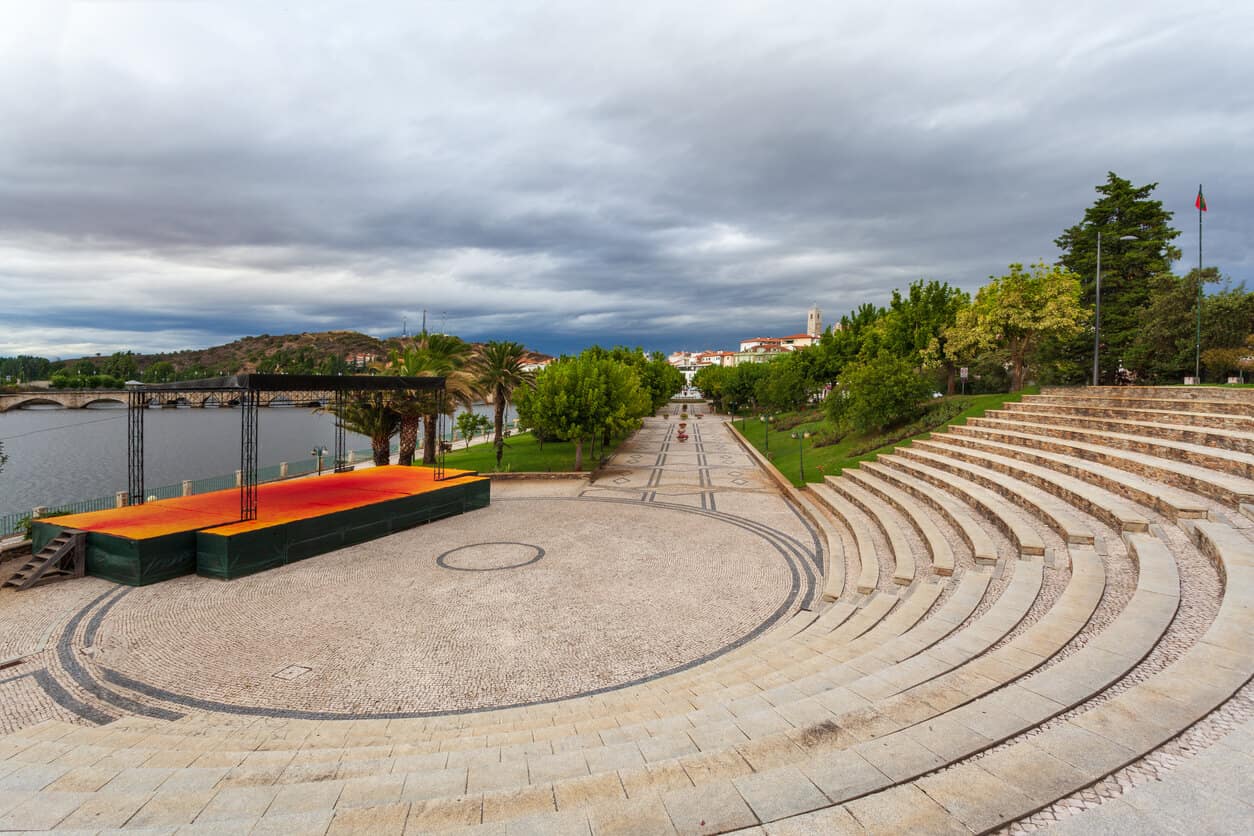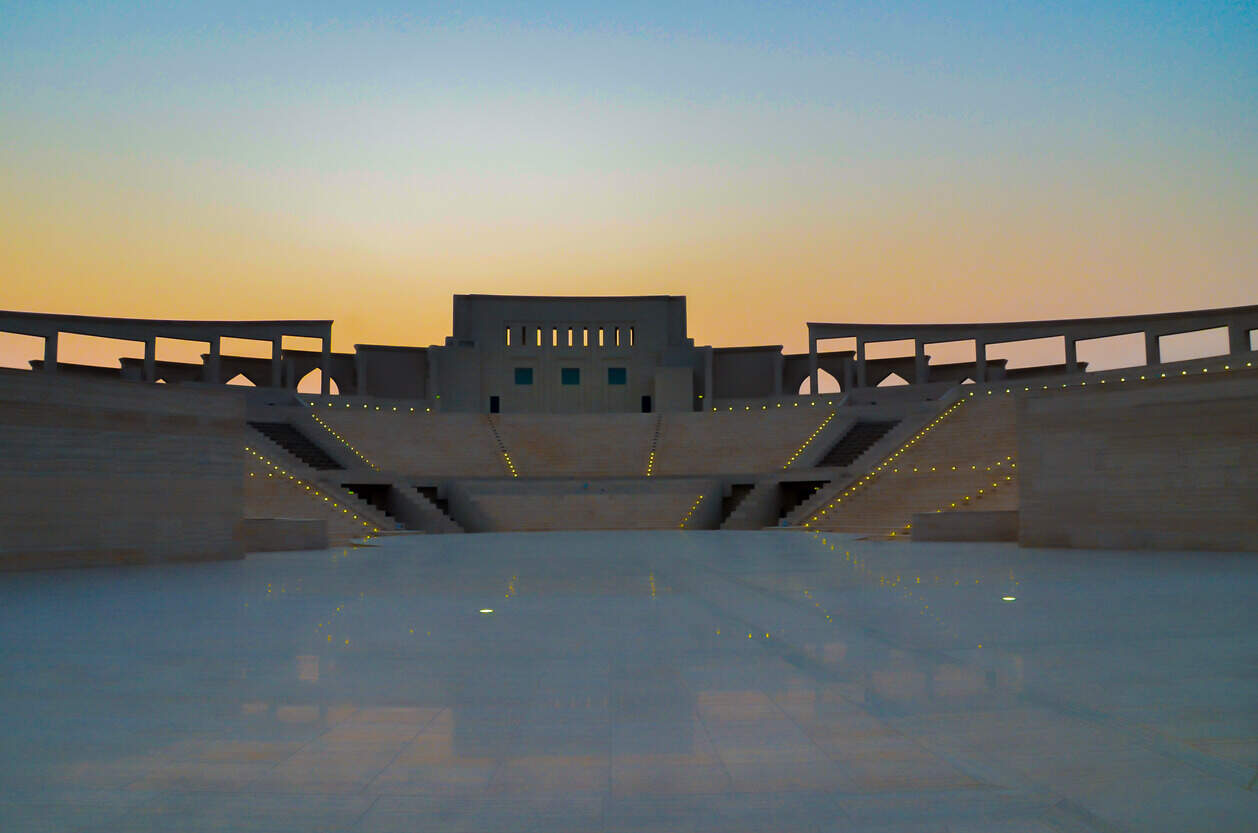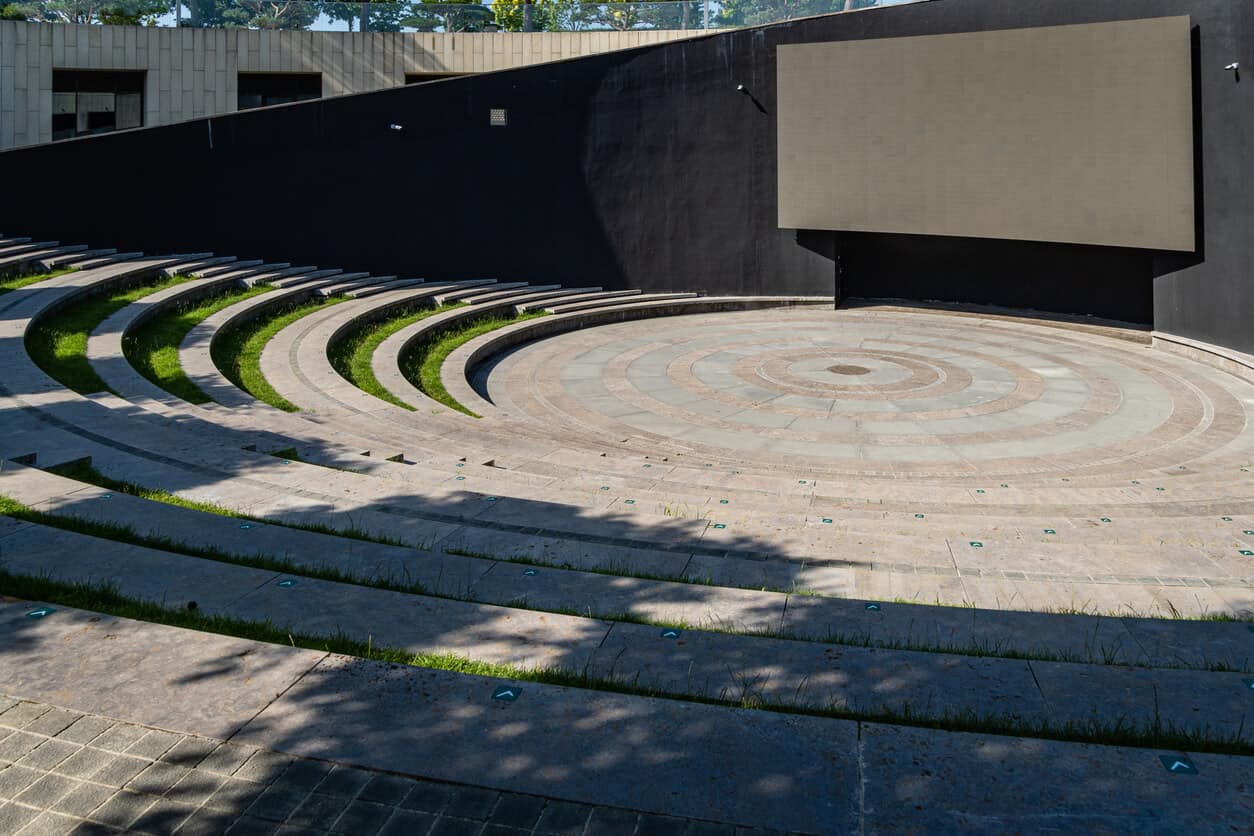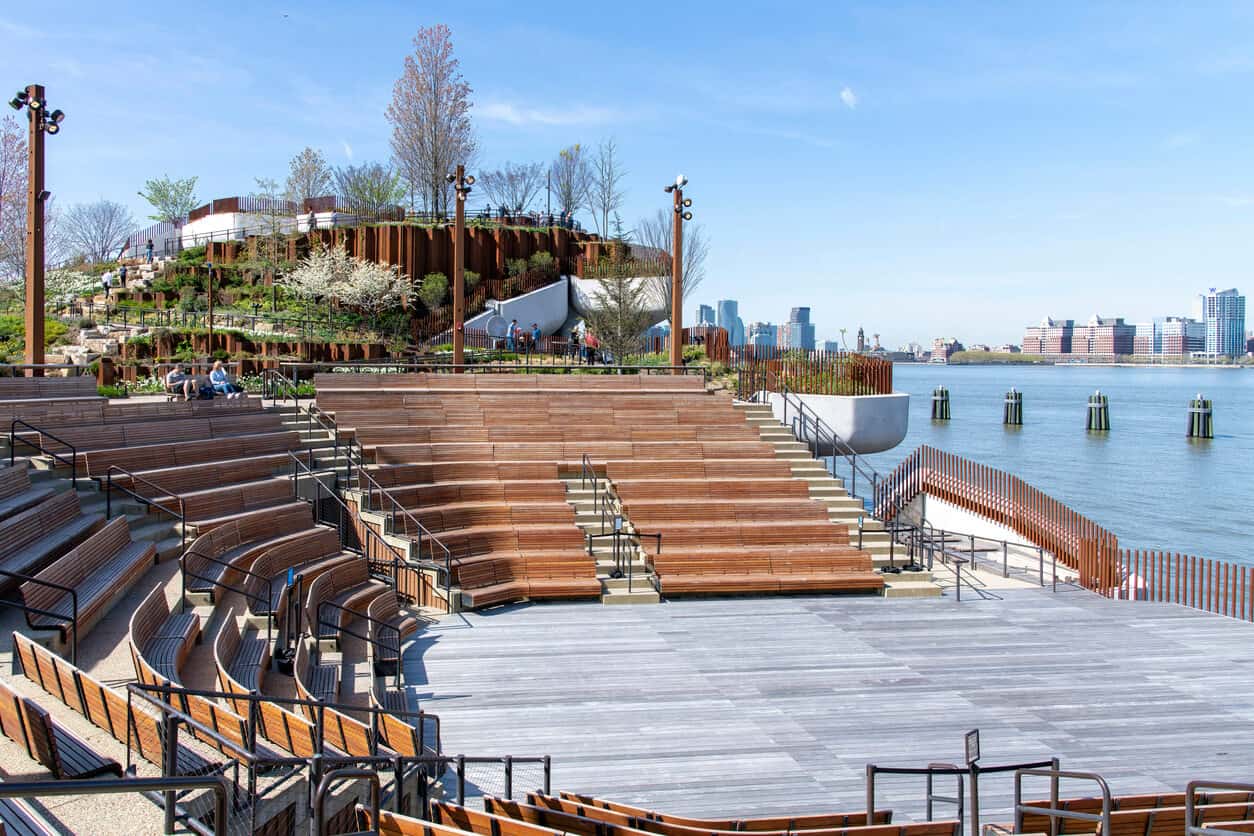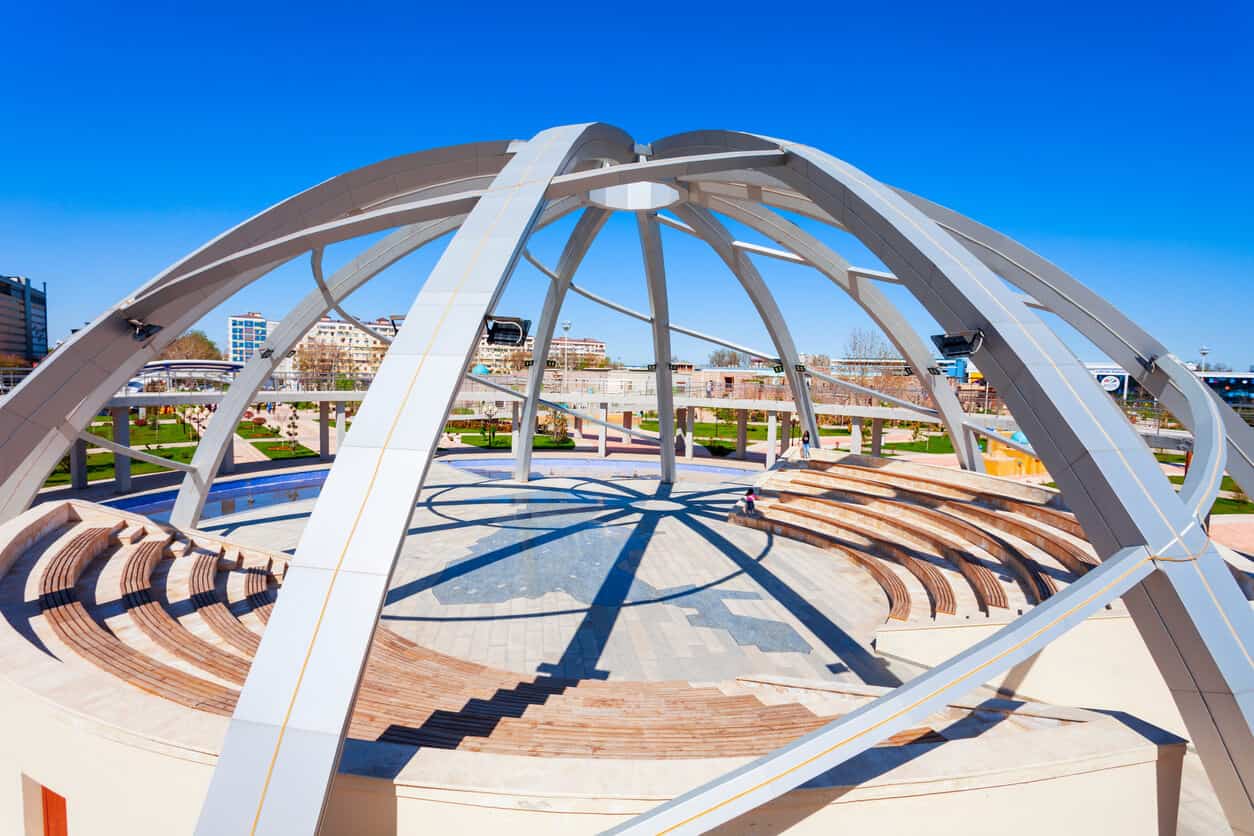A summer concert with 10,000 of your closest friends. Shakespeare in the park with only a few rows of seating and under 100 attendees. A non-traditional outdoor space for a company meeting. Amphitheaters can accommodate all of these events and more.
Typically, these gathering places are free-standing, round or oblong structures that feature a central stage surrounded by seating. Outdoor theaters like these, which can range in size from modest community venues to enormous concert halls, have roots in ancient times — taking inspiration from such structures as the Colosseum in Rome and France’s Arles Amphitheater.
While indoor performance spaces can be expensive to build and maintain, modern amphitheaters can be cost-effective (no heating or air conditioning bill when you’re outside) while accommodating a variety of entertainment options. Here, we’ll explore some of the additional benefits of these venues as well as design tips and inspiration.
A Brief History of the Amphitheater
The word “amphitheater” derives from the ancient Greek amphitheatron, with amphi- meaning “on both sides” or “around” and théātron meaning “place for viewing.” Throughout history, and today, these venues have taken center stage for sporting events, musical performances and theatrical productions.
Amphitheater designs worldwide have unique characteristics and dimensions that are particular to their purpose or the time period in which they were built. Some have elongated seating arrangements, while others are circular. Additionally, some designs may be completely open to the sky while others feature covered stages and seating with an open area beyond.
Key Elements of Amphitheater Design
Let’s take a closer look at some of the most prominent features of amphitheater design and some tips to create an outdoor auditorium that truly performs:
Seating
Seating arrangement is one of the most crucial aspects of amphitheater design. Specifically, shape, acoustics, seating options, shade covering and accessibility should all be considered when making decisions about where guests will sit for performances.
Knowing your venue’s capacity and maximum budget will help you determine the layout that’s right for your project. Another important component of amphitheater design is stage orientation. Will the stage be fixed at one end, centrally located (for performing in the round), or will the space and seating be flexible?
Seating options should be comfortable for spectators and most importantly, must be accessible for all abilities. To inform your set up, take the natural surroundings into account — optimizing views of the stage and considering exposure to the elements. You may also want to incorporate a general admission area in the rear of your venue, such as a lawn area for blankets and bring-your-own seating.
Acoustics and lines of sight are both top considerations when designing an amphitheater, as patrons should be able to see and hear clearly from every seat in the house. An efficient sound system and acoustic paneling can help mitigate ambient noise in both indoor and outdoor amphitheater designs.
Stage Design
When it comes to creating the optimal amphitheater, stage design is just as crucial as the seating plan. First, use the established shape, size and seating layout to determine the ideal height, dimensions and covering for your stage.
Your stage design should create clear sight lines, no matter where guests are seated. Bring the stage closer to the farthest seat by making use of high-quality audio and video systems.
Audio Visual Considerations
Factors such as the audio visual (AV) needs of your audience, your anticipated budget and your amphitheater’s intended purpose all come into play during the design process. For example, concert or musical performances require high-performance AV technology to ensure that guests don’t miss a single note. If your amphitheater is multi-use, you may wish to consider additional AV features such as interactive communication solutions.
Amphitheater Designs and Examples
Ready for some inspiration? Let’s look at different examples of amphitheaters from around the world:
1. Longwood Gardens Theater — Longwood, PA
This open-air theater can accommodate up to 1,500 viewers and features underground dressing rooms. Du Pont, the amphitheater’s designer, installed fountains with circular basins, jets and more than 600 colored lights to create a magical, illuminated backdrop for the stage.
2. Camden Library Amphitheater — Camden, ME
According to its website, this historic example of landscape architecture “successfully marries the ideals of the Renaissance Italian garden theater with the richness of Maine’s native landscape.” The amphitheater is part of the town’s library grounds and is a beautiful example of an outdoor auditorium in a public space.
3. Wellington Zoo Amphitheater — Wellington, New Zealand
This multi-purpose performing space was created within a very tight budget. The architects who worked on the project describe it as “comprised of tiered seating covered by a simple lean-to roof that folds down to an inclined rear wall. The roof at its lower edge is staggered and the rear wall stepped to allude to the concept of a traditional (radial) amphitheater.” The innovative rear wall folds open to allow audience overflow in good weather.
4. Cranbrook’s Greek Theatre — Detroit, MI
This historic theater is thought to be modeled after ancient ruins located near Taormina in Sicily. Part of a once-private estate, this elongated space, with an open backdrop of pilasters and enclosed wings with a beautiful reflecting pool beyond, provides a home for the Cranbrook Theater School.
5. The Masonic Amphitheatre and Park — Clifton Forge, VA
This recently built amphitheater, whose April to October season presents music, plays and festivals, uses modern materials and engineering to create an innovative spin on a millennia-old concept. AV and sound management technologies are baked into the building, which provides a traditional, community-focused outdoor auditorium experience with a forward-thinking aesthetic.
Designing Your Own Amphitheater
Designing or remodeling an amphitheater can be challenging. There’s a lot you need to consider, including the natural surroundings, the audience’s AV technology needs, seating layout and stage design. DGI Communications is here to help make the process as easy as possible, whether you’re renovating or remodeling a large, established venue or just getting started building a small amphitheater. Contact us today to get started.
